Church visit or “Visita Iglesia” is one of the traditions that Filipinos practice during Holy Week. It is one of the “panata” (sacred vows) of devotees to show their faith, repentance, and reflection.
The historical churches in Albay are just a few minutes away from each other, making it more convenient for devotees to practice their faith during Holy Week. Considering Albay’s rich history and religious endeavors, individuals or groups of devotees can explore various churches across the province.
Visitors may choose to visit either seven or 14 churches, corresponding to the Seven Last Words of Jesus or the Seven Holy Wounds of Jesus. However, some opt for 14 churches to match the 14 Stations of the Cross.
- Divine Mercy Monastery of the Carmelite Nuns (Ligao City)
In order to reach the Shrine of the Divine Mercy Monastery of the Carmelite Nuns of the Holy Trinity, catholic devotees coming from Camarines Sur or Sorsogon have to travel for at least an hour and a half. On May 22, 2016, Rev. Joel Z. Baylon, D.D., inaugurated and consecrated the shrine, standing as a testament to the prayers and sacrifices of the Carmelite Nuns of the Holy Trinity. The inauguration was supported by benefactors from the USA, Canada, and Europe, along with the efforts of the Diocese of Legazpi.
Perched on a hill, the shrine’s unique style and serene location provide visitors and devotees alike with a sense of peace and tranquility. Marilyn Donato, the administrative officer of the shrine, says that more than 10,000 pilgrims visit the Divine Shrine every Holy Week. Since it only takes eight minutes to reach Ligao City, it is best to bring some packed lunch or snack—convenient for those who are planning to visit Kawa-kawa Hill.
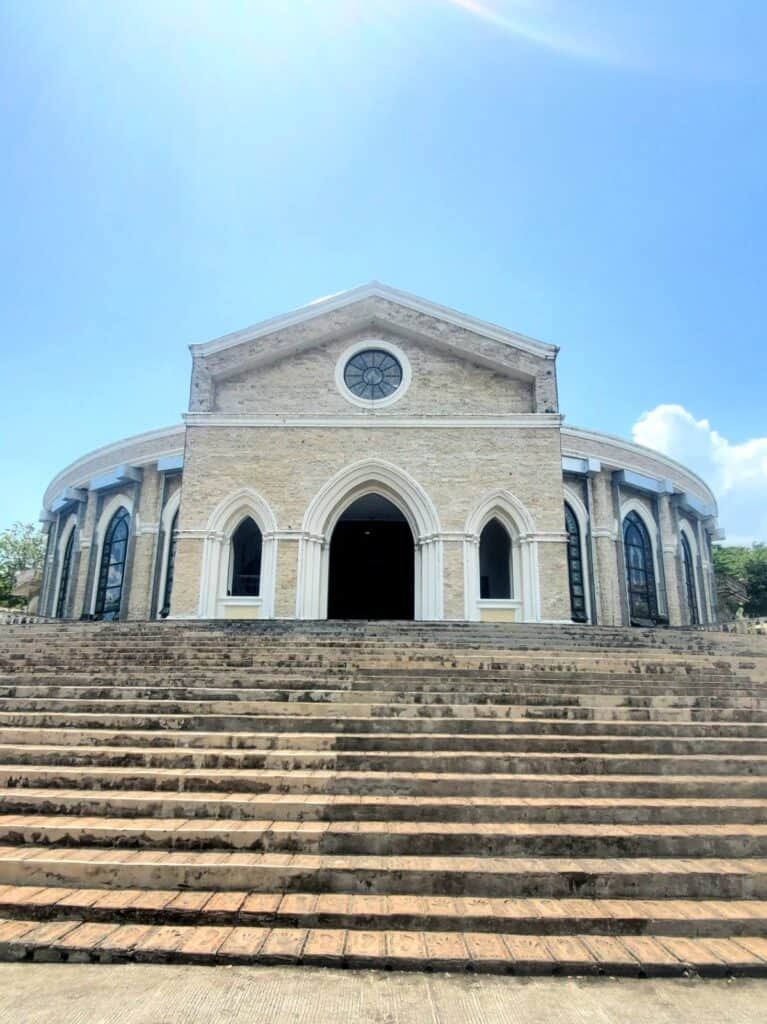
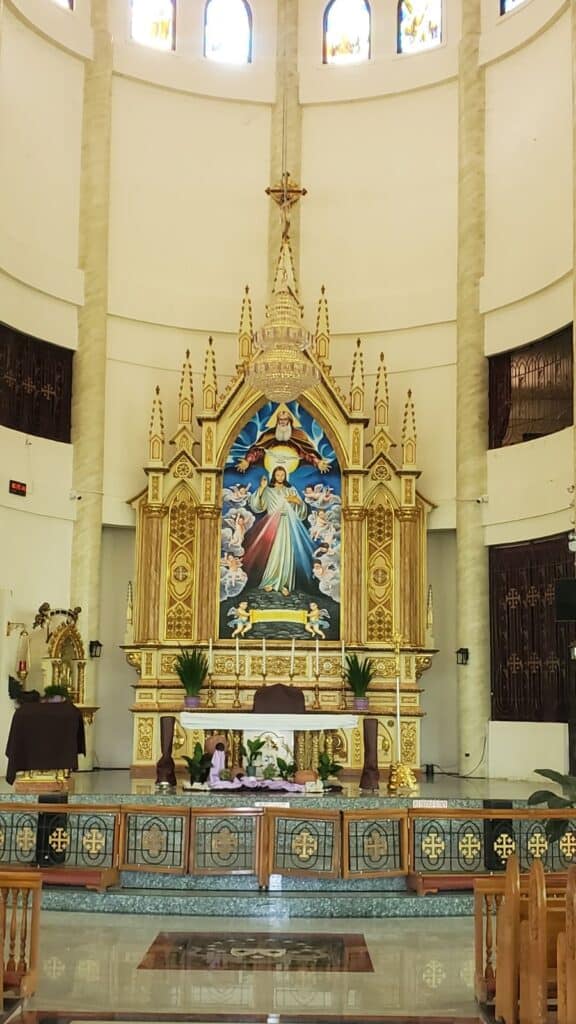
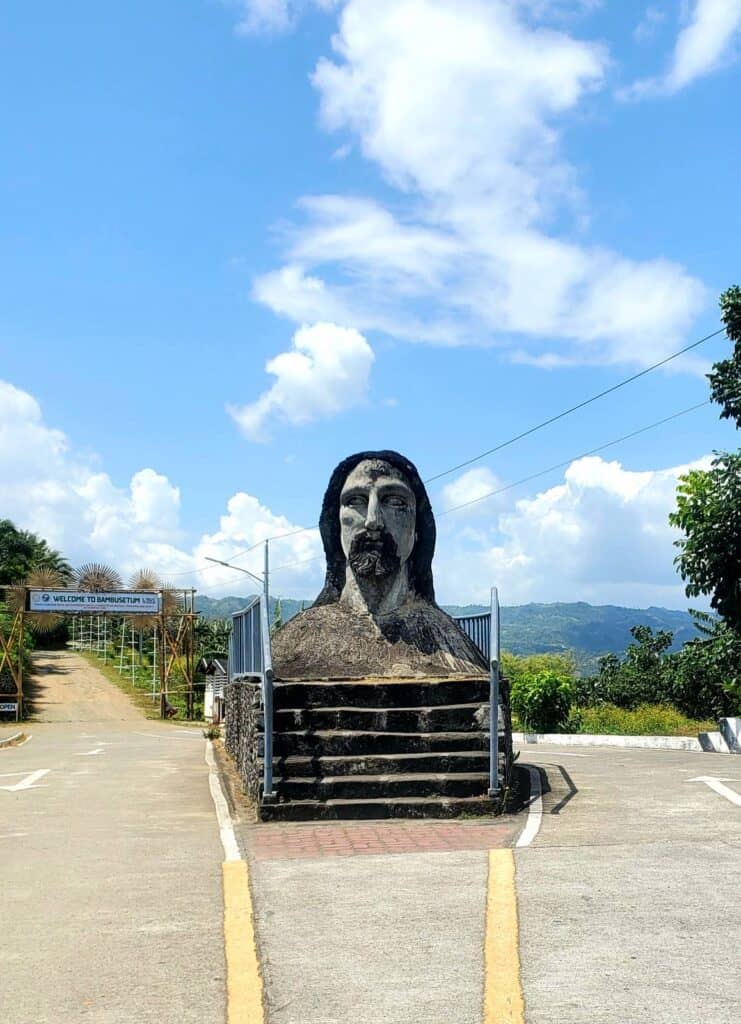
- Our lady of Assumption Parish (Guinobatan, Albay)
The Guinobatan church honors Our Lady of the Assumption, believing that, like her, all faithful followers will one day be raised up. It stands as a powerful symbol of hope and represents the ultimate destiny awaiting those who remain faithful to Christ.
In 1863, Msgr. Julian O. Ope’s determination to reconstruct Guinobatan’s devastated church took hold. Despite adversities, Msgr. Ope earnestly appealed for community perseverance. With strong ties to Spanish heritage, Guinobatan residents united behind the project; each contributed material diligently. Through their collective efforts, the church was rebuilt, symbolizing their enduring faith and resilience.
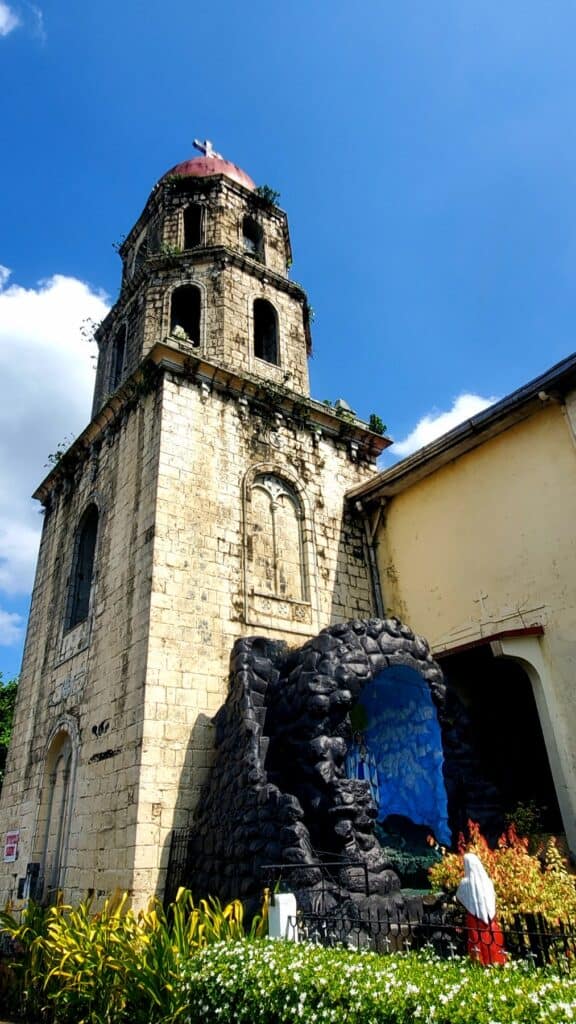
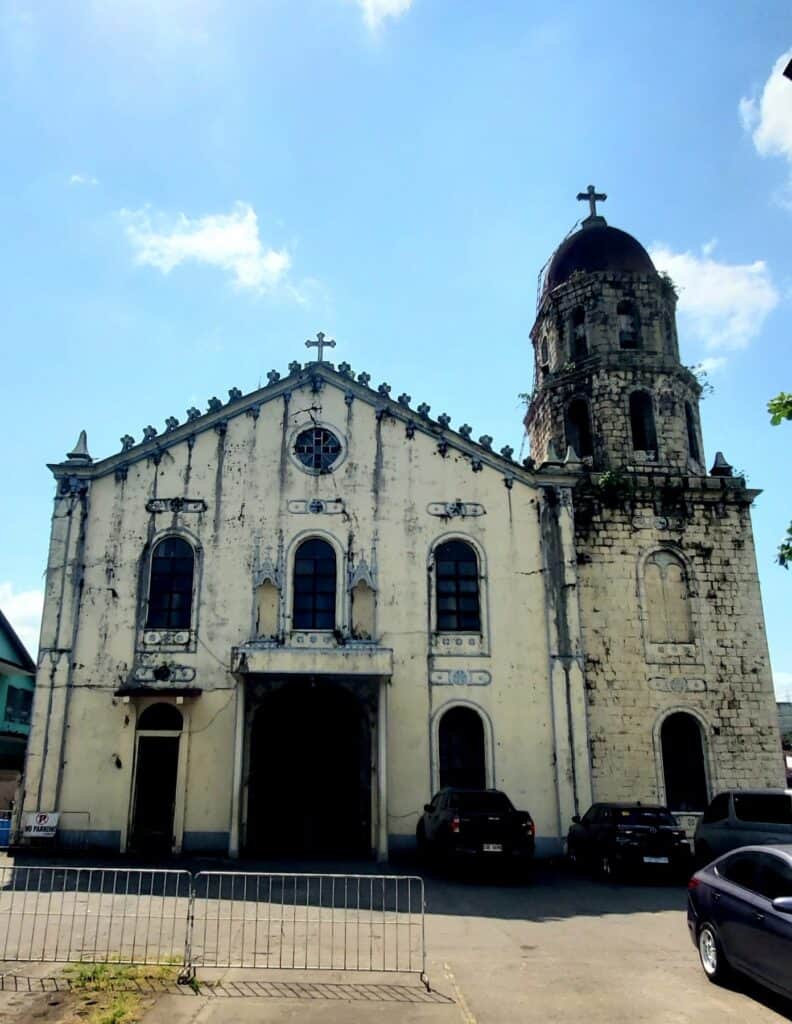
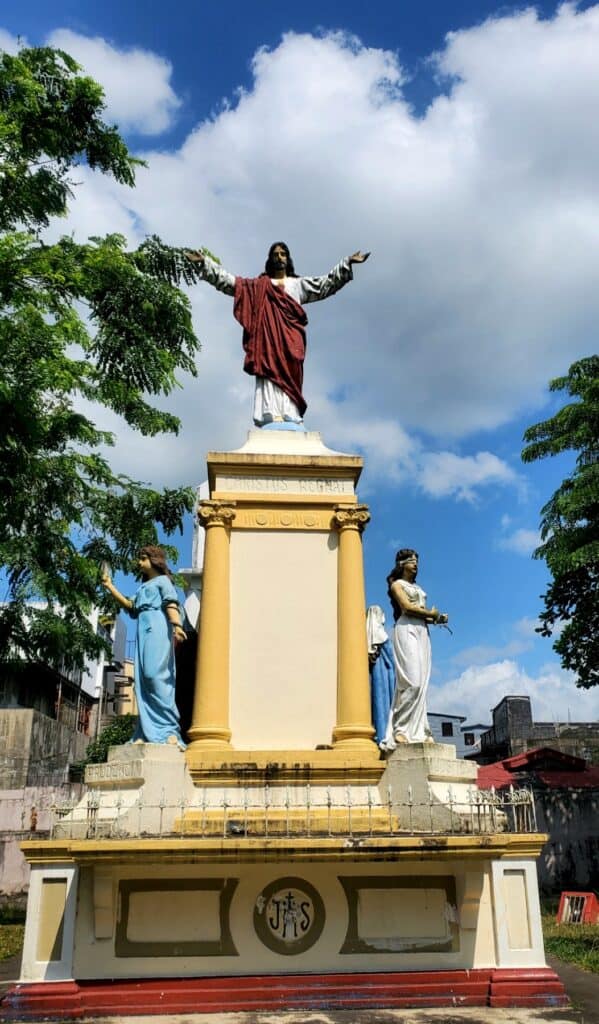
3. St. John the Baptist Church (Camalig, Albay)
The Saint John the Baptist Parish of Camalig was the first church made of wood and nipa that was built by the Franciscans under the patronage of Saint John the Baptist in 1579–1580.
In 1605, the second church made from the stone was built by the prisoners. The eruptions of the Mayon Volcano in 1766 and 1814 caused damage to it. In 1837, Padres Francisco Latoba and Manuel Brihuega renovated the church all over again.
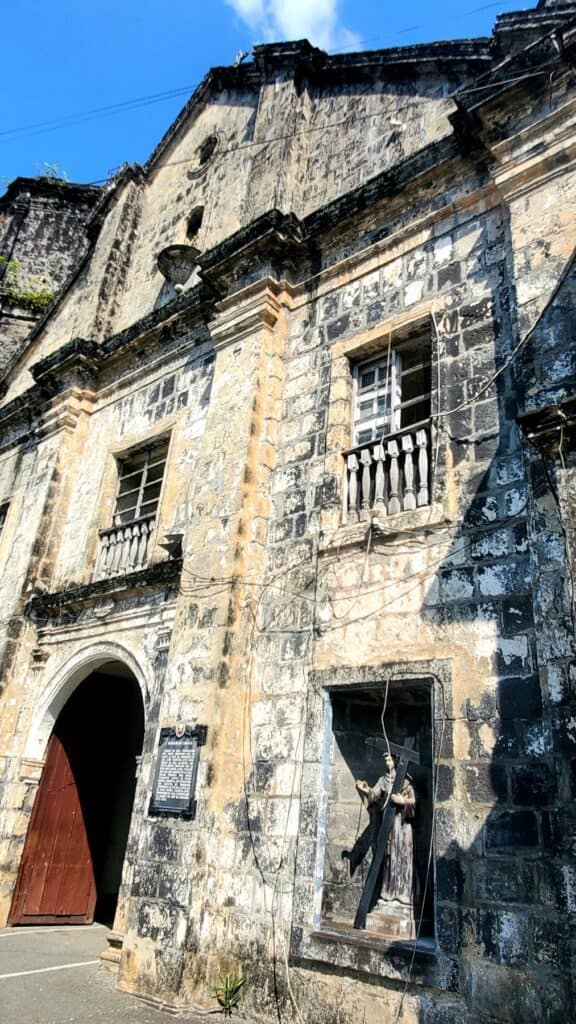
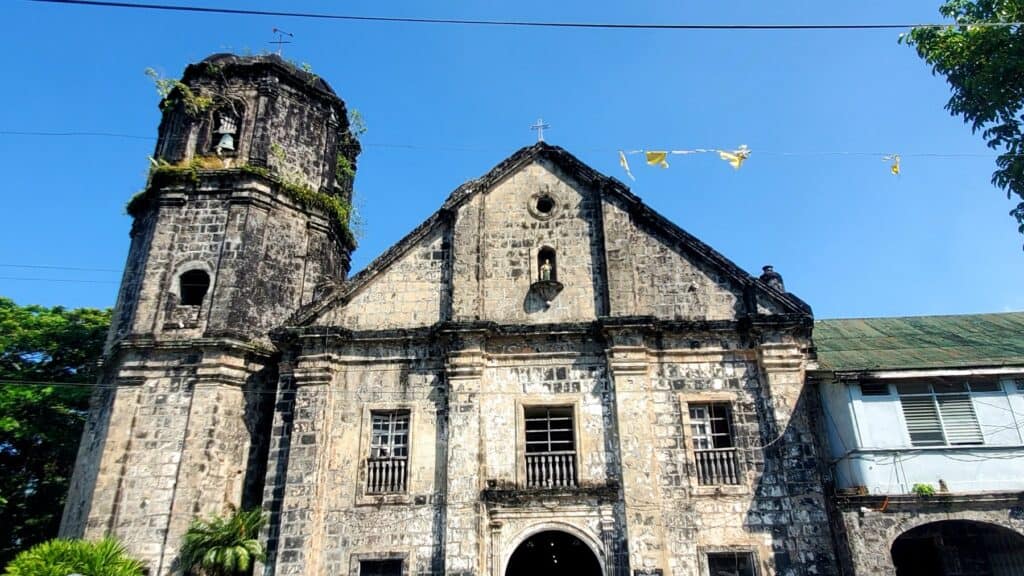
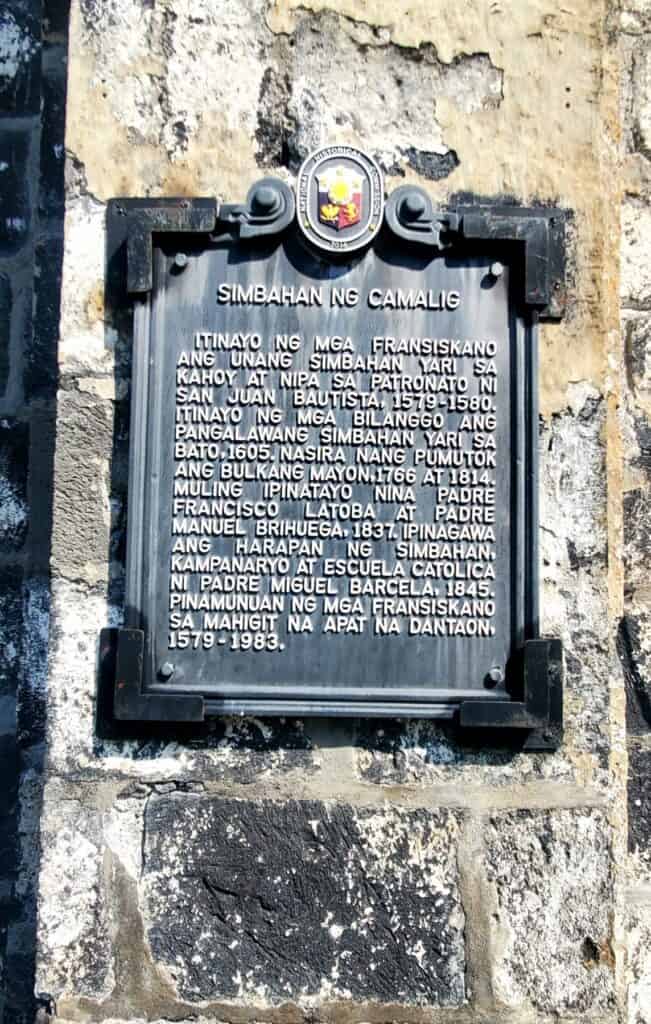
4. Our Lady of the Gate Parish Church (Daraga, Albay)
Nestled atop a hill, Our Lady of the Gate Parish Church in Daraga, Albay, offers a stunning view of Mayon Volcano. The church was built starting in 1773 and completed in 1815, following the transfer of Cagsawa’s town center due to volcanic eruptions and flooding.
The church is renowned for its Churrigueresque style, characterized by elaborate ornamentation, including Solomonic columns and floral motifs, reflecting a mix of Spanish Baroque and local influences. This unique design symbolizes the church as a gateway to heaven and a place of refuge, evident in its dedication to Our Lady of the Gate of Heaven and its depiction of heaven’s communion of saints.
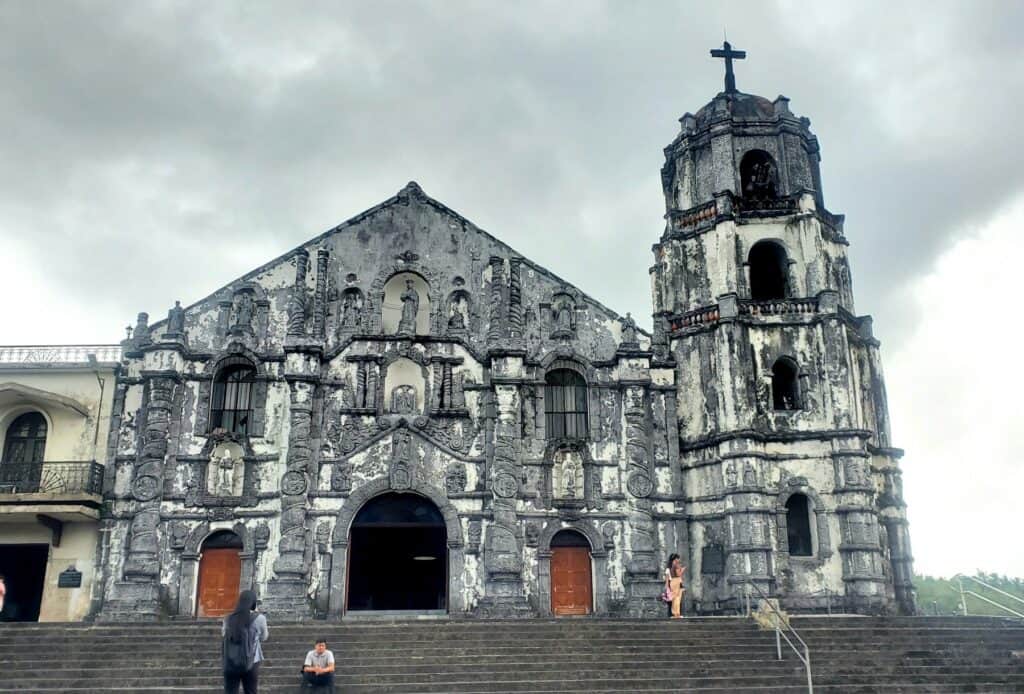
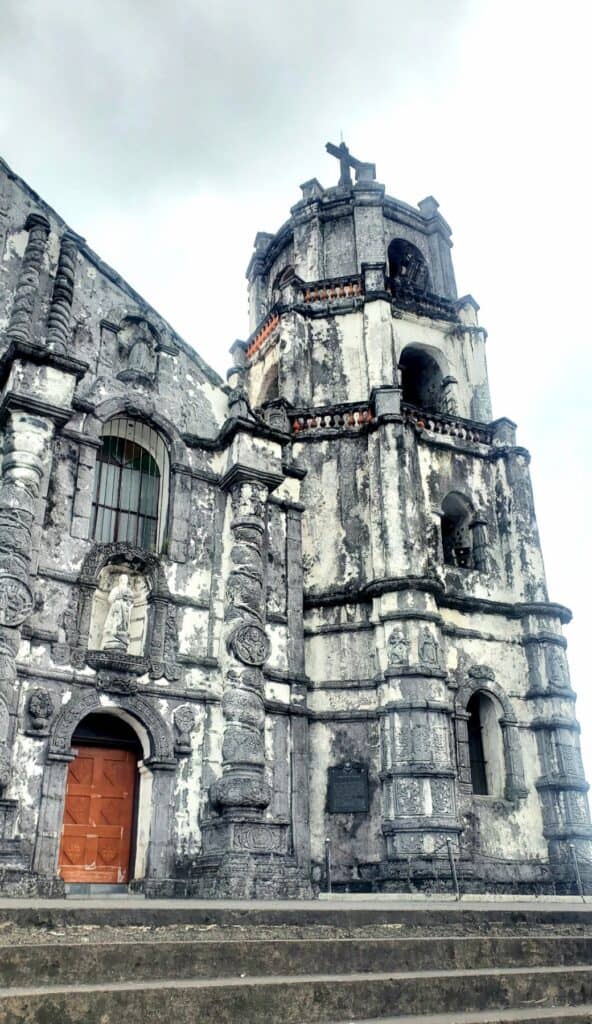
5. St. Gregory the Great Cathedral parish (Old Albay, Legazpi City)
Known as the Albay Cathedral in Old Albay, Legazpi City, St. Gregory the Great Cathedral Parish served as the seat of the Diocese of the city and was honored annually on June 24. Using only wood, the church was first built in 1587 under the patronage of San Gregorio Magno and eventually became a parish in 1616.
Three decades later, after it became the seat of the newly established Diocese of Legazpi in 1951, the cathedral marked a significant historical moment when Pope John Paul II entered its sacred halls and blessed the faithful gathered within. With just its plain facade and tall bell gable, the design and construction of Albay Cathedral are much like Tiwi Church, which has also been called “Partido Baroque.”
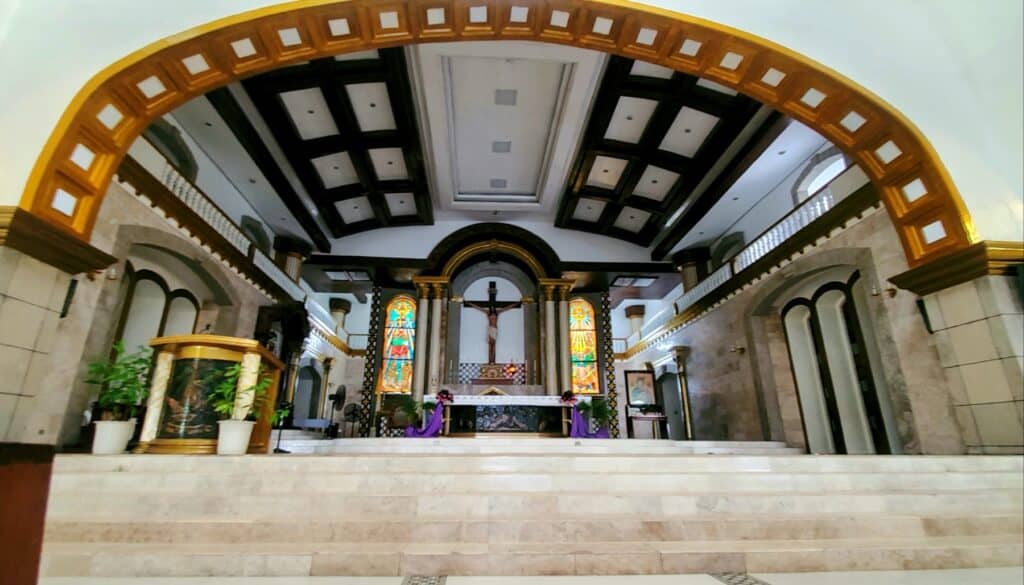
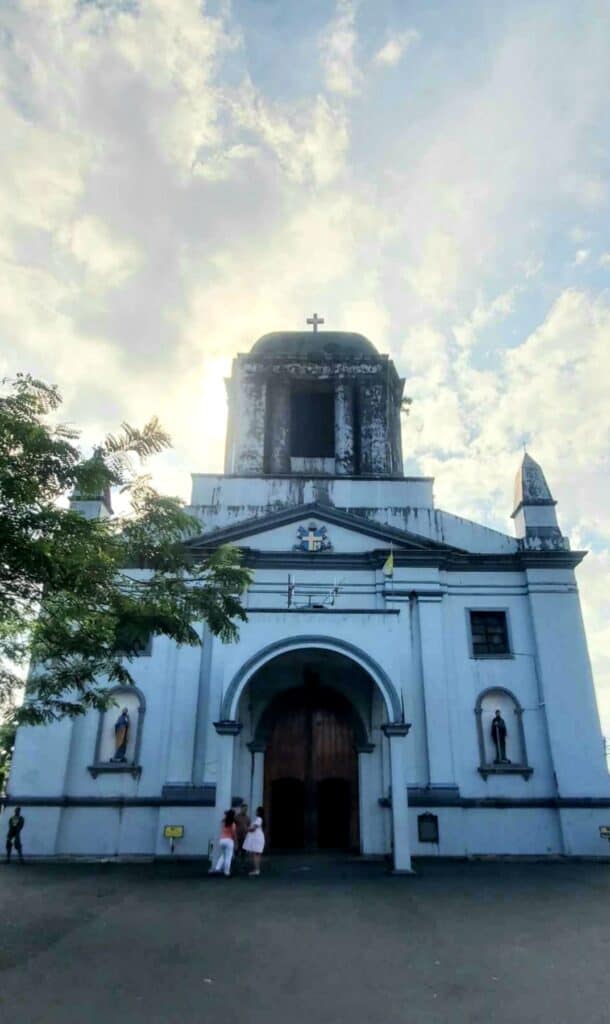
6. St. John the Baptist (Tabaco Albay)
The Grand St. John the Baptist Parish Church is also known as Dakulang Simbahan (Big Church) in Tabaco City. Located in the city center, this iconic church was established between 1864 and 1879 under the guidance of Fr. Fermin Llorente which represents a quintessential example of Earthquake Baroque architecture.
One thing which distinguishes Tabaco Church is that some stones have initials engraved on them which are believed to have been done by the masons who carved them out. In addition, carvings representing a native chieftain beside an image of the king of Spain decorate its belfry symbolizing Spanish respect for local pre-Hispanic rule. This unique embellishment makes St. John the Baptist Church a cultural treasure for all Filipinos.
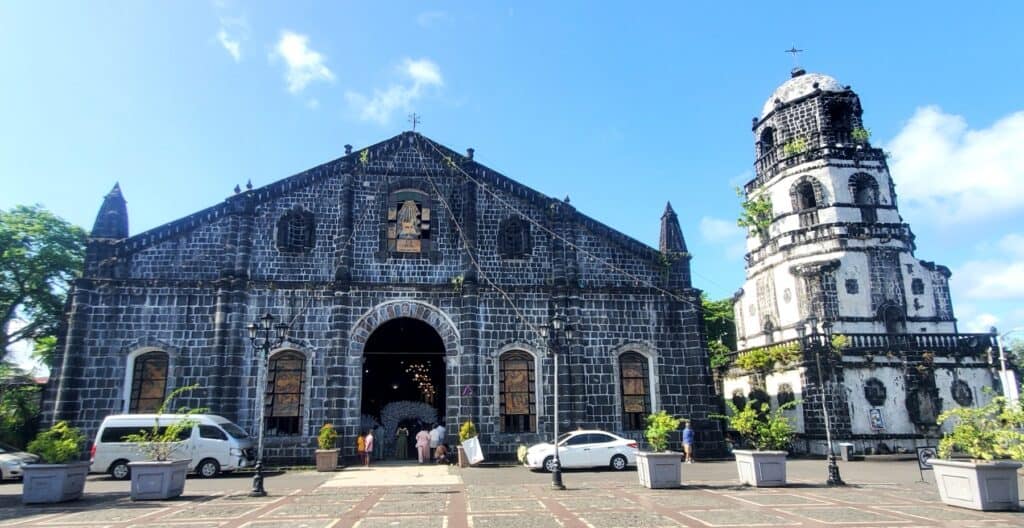
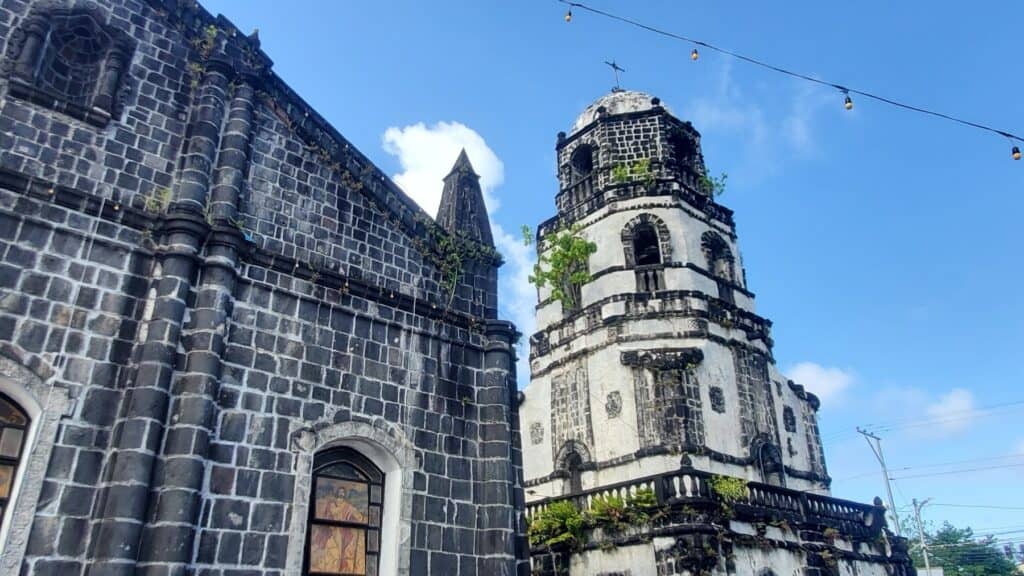
7. Saint Lawrence the Martyr Parish (Tiwi, Albay)
To complete the seven churches to visit in Albay, Catholic devotees can travel to Saint Lawrence the Martyr Parish, also known as the San Lorenzo Church.
It was first established in 1776 and had been rebuilt subsequently because it was prone to typhoon-induced tidal waves.The present church, which was completed in 1829, has been standing for 195 years now. It was dedicated to a Spanish martyr, St. Lawrence, who served as a patron saint of beggars.
Every August 10th, people from Tigbi and Tiwi of Albay gather in solemn rites and festivities to honor their patron saint, St. Lawrence the Martyr.The same feast occurs annually in Balangiga, Samar, as well as Bangui, Ilocos Norte, to honor the same saint.
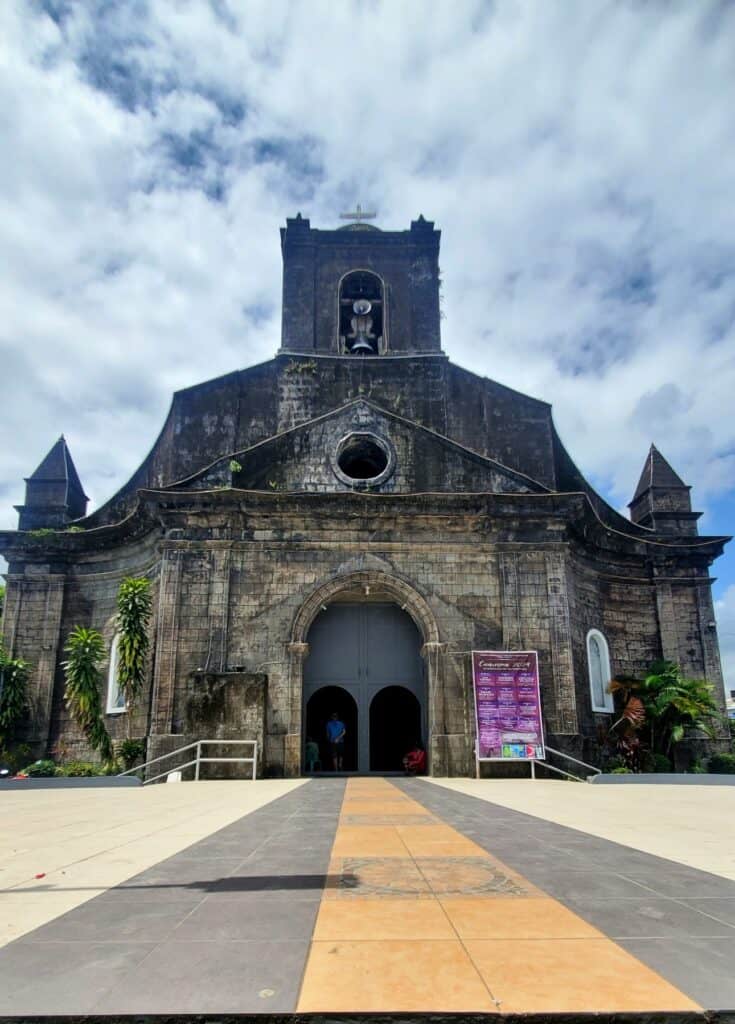
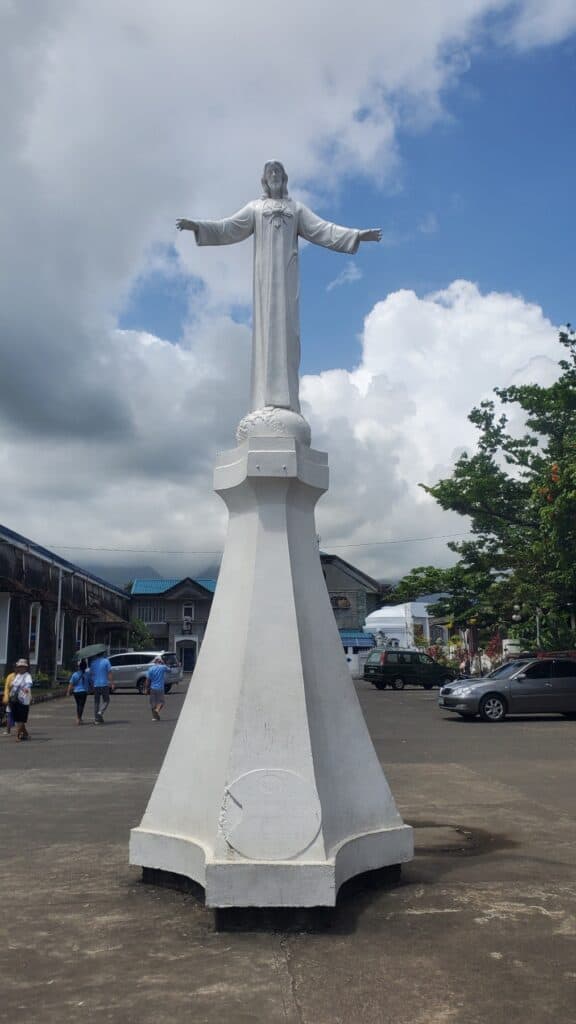
Sacred churches are at their busiest during the holy week, with churchgoers coming and going for Visita Iglesia. This tradition is said to have originated with St. Philip Neri during the 16th century and was introduced to the Philippines by Spanish friars and missionaries.
However, it is important to remember that Visita Iglesia is not only for taking pictures and admiring the beauty of the church; devotees can also offer prayers, make wishes, and, most importantly, spend time praying the Holy Rosary. | Lyzha Mae Agnote, Alliah Jane Babila
